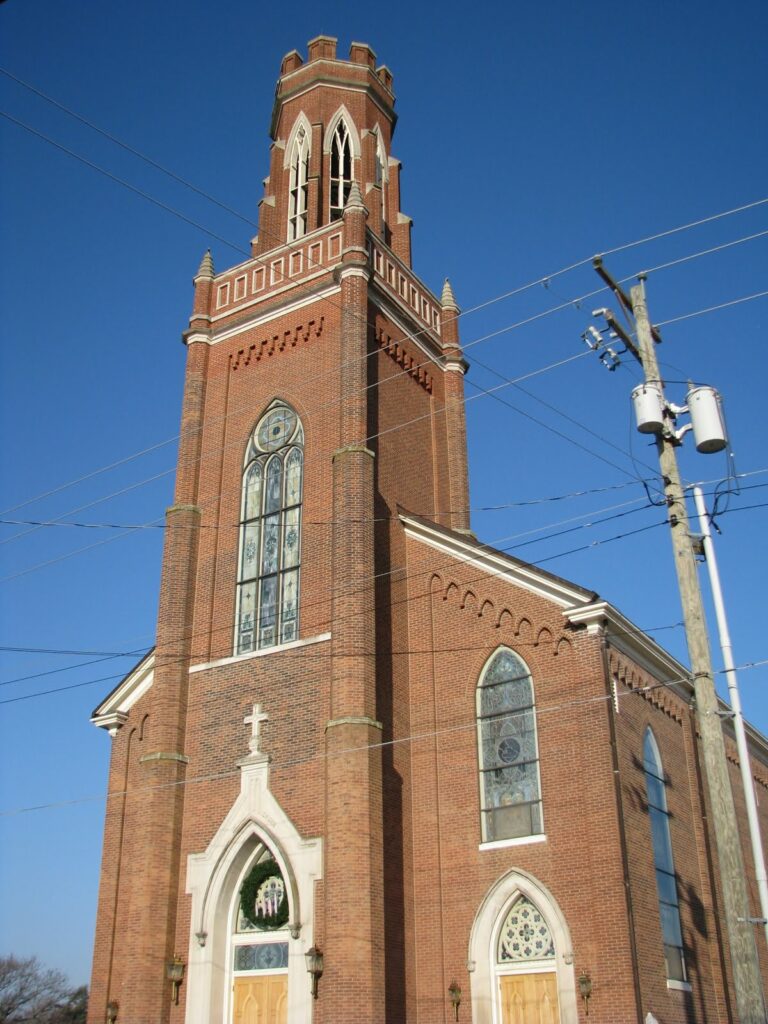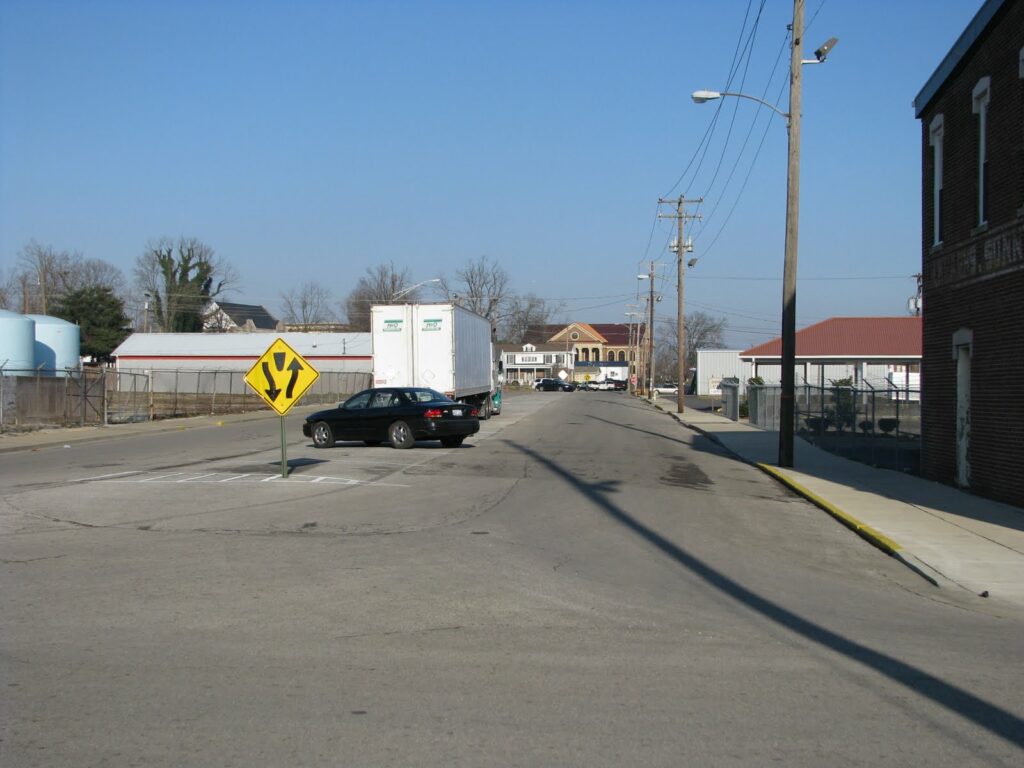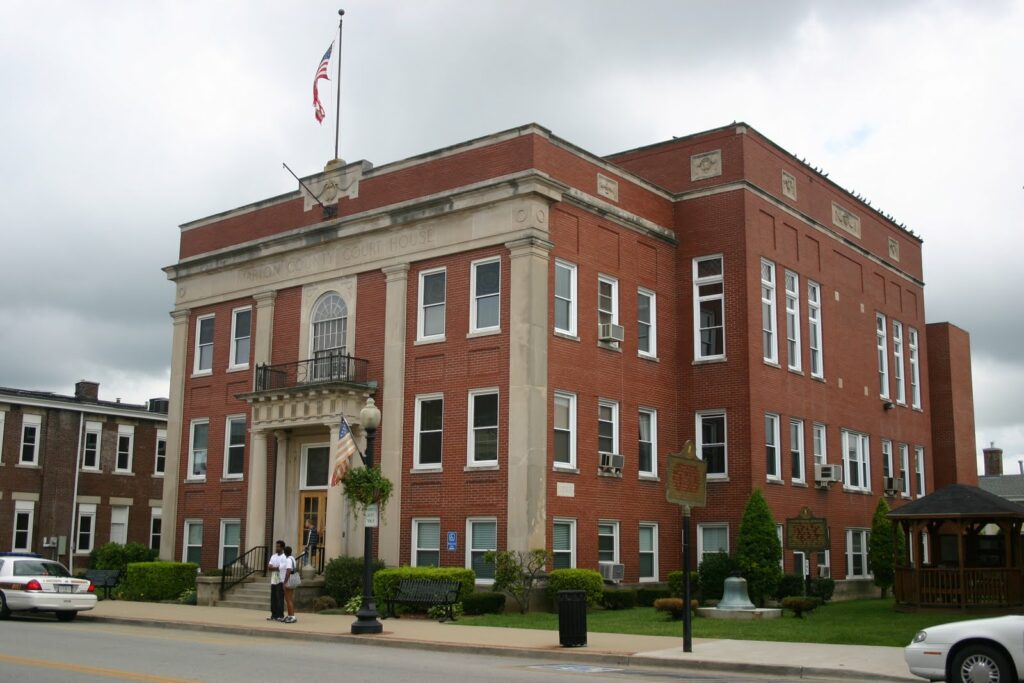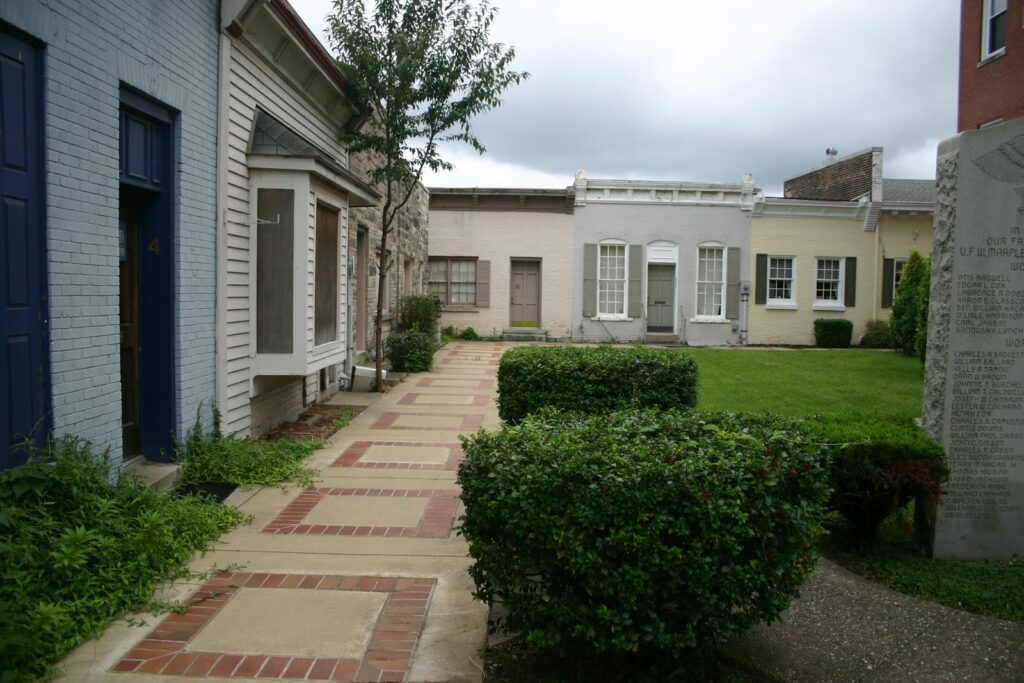Although Lebanon was originally settled by Presbyterians, it quickly became a center of Catholic faith. The first Catholic Church organized here in 1815 and the first church was erected in 1825. In 1837, this church (then called St. Hubert’s) was rededicated to St. Augustine.
In 1871, the present church was completed and it certainly is a beautiful parish church. As is the case with Catholic churches generally, the doors are open during the day for people to enter and pray. [I wish this were the case with certain Protestant congregations, particularly those with historic and beautiful building!] After praying, a snapped the picture [right] of this gorgeous house of prayer.
The church’s mission statement is great, honoring in its first paragraph both God and our great Commonwealth:
St. Augustine Catholic Church, located in the heartland of Kentucky’s holy land, being rich in history and tradition, is a diverse community of believers committed to serving God and neighbor. We are sustained by a loving devotion to the celebration of the Eucharist in fulfillment of our Baptismal call to proclaim the Good News of salvation.





